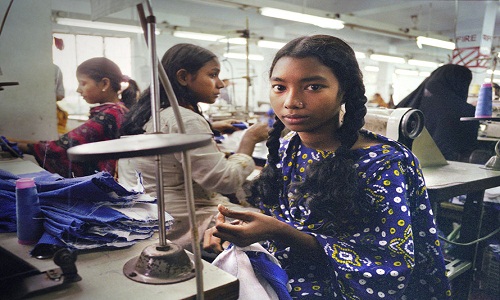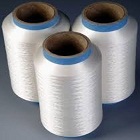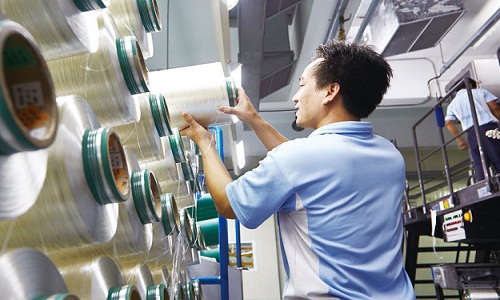FW
"Consumers are tempted to buy trendy clothes the moment they are on shelves. But they don’t realise the stark reality, the pain with which the clothes are being manufactured. Fast fashion retailers in order to beat one another bring out newer collections frequently and this has been hampering not just the ecological system but also human labour adversely. Recently while shopping at Zara, customers from Istanbul found something unusual in the garments, which were tagged with messages from the factory workers saying, ‘I made this item you are going to buy, but I didn’t get paid for it.’ This is just one of instances showcasing their plight."

Consumers are tempted to buy trendy clothes the moment they are on shelves. But they don’t realise the stark reality, the pain with which the clothes are being manufactured. Fast fashion retailers in order to beat one another bring out newer collections frequently and this has been hampering not just the ecological system but also human labour adversely. Recently while shopping at Zara, customers from Istanbul found something unusual in the garments, which were tagged with messages from the factory workers saying, ‘I made this item you are going to buy, but I didn’t get paid for it.’ This is just one of instances showcasing their plight.

At most fast-fashion retailers’ workshops, employees work long days without a break to create hundreds of garments. These factories are also claimed to be anti-feminist. They exploit their largely female workforce while making a profit selling clothing with feminist messages. For example, 75 million people make clothes for brands across the world, and 80 per cent are women. These women encounter sexual assault, corporal punishment and verbal abuse while making little to no wages.
Can such incidents be ignored?
After the Zara incident, company officials were quick to respond stating that they are working on a proposal for a hardship fund for the employees affected by the situation. This instance should teach other brands that workers will take a stand against unethical practices.
A similar incident happened in Bangladesh when Rana Plaza collapsed, killing 1,134 and injuring more than 2,500 others. As a result, 17 companies including Nike, Patagonia and H&M, agreed to follow the transparency pledge. The pledge is aimed at providing ethically sourced products by encouraging brands to identify and provide other information about the clothing manufacture processes, according to the Human Rights Watch. However, still many brands are not publishing their information, including Urban Inc., Forever 21 and American Eagle Outfitters. Transparency is necessary to prove they are sourcing their garments ethically.
Women workers face the brunt
Women are making little to nothing for a garment and in return are sexually harassed, assaulted or worse. Designers and consumers alike need to face this problem by finding a balance between fairly priced garments and workers’ basic human rights. Most college students can’t afford expensive brands but still want to be conscious of how their clothing is manufactured. In order to drive the change, we need to acknowledge the problem and keep the discussion going. If this happens, then ultimately brands will have no choice, but to listen to its customers and source its products ethically.
The Chiripal Group plans to set up a Rs 500 crores terry towel facility in Ahmedabad with 80 airjet looms. About 95 per cent of the production will be exported. The company expects to achieve a turnover of Rs 400 crores from this plant in the first year of operations. The company has a total turnover of Rs 850 crores.
The unit will have a spinning capacity of 24,408 spindles and 960 rotors which will help Chirpal increase turnover to Rs 1,100 crores by the end of fiscal 2016-17. Commercial production will start from December this year.
Chiripal is a vertically integrated group of textile manufacturing companies based in Gujarat. With its eyes set on overseas market, the company has chalked out a strategy to market terry towels in the US, Germany, UK, Italy, France, Romania, Australia, New Zealand and Canada.
To meet its in-house requirements of textile verticals, Chiripal is also setting up 48,960 spindles for manufacturing cotton yarn with an investment of Rs 306 crores. The new facility will come up at Dholi Integrated Spinning Park near Ahmedabad for which the company has acquired 30 acres.
The towel manufacturing unit Nandan Terry will soon be brought under the denim unit of the group named Nandan Denim, thereby making it a diversified textile company.
Kids on China will now have access to safer apparels. The country has issued the first mandatory national textile standards for children’s clothing. The standards created after nationwide textile product inspections last year revealed that more than 10 per cent of products designed for children, including apparel, failed in safety regulations.
The standards are expected to guide manufacturers to improve the safety and quality of children’s clothing to ensure infants’ and children’s health and safety. Textiles are divided into two types under the new standards: materials for infants 36 months or younger and children from the ages of 3 to 14.
Six plasticisers and two heavy metals (cadmium and lead) have been banned in children’s apparel. Cords, stipulations and combustibility are also altered under the standard’s requirements for mechanical safety. Cords are banned from the neck area of clothing for kids under seven and sharp stipulations are also eliminated from all children’s apparel.
The new standard also breaks children’s apparel into three safety regulation groups: Category A includes all infant textile products and is very rigid in terms of appropriate materials; Category B involves any products created for direct skin contact and they must meet or go above the standard’s guidelines at this level; and Category C is the least rigid and involves children’s clothing not designed for direct skin contact.
Techtextil North America will be held in Chicago, Illinois from June 20 to 22, 2017. This is an international trade fair for technical textiles and nonwovens. Chicago’s four million strong private sector workforce puts a dynamic and thriving business community within steps of the exhibition’s location. Home to more than 2,70,000 businesses, more than 400 major corporate headquarters, and more than 300 corporate R&D facilities, Chicago is an economic powerhouse of thriving industries.
The show will present a B2B regional platform so that exhibitors and visitors can reconnect or establish new business relationships. Techtextil North America assembles all vertical aspects of the technical textile industry. From research and development, through raw materials and production processes to finally ending in conversion, further treatment and recycling. The Techtextil North America Symposium will address market developments, technological information, new technical processes and products as well as international industry trends.
Techtextil North America is the only trade show in the Americas dedicated to technical textiles and nonwovens. Exhibitors from around the world will showcase their latest innovations and visitors can discover new products, exciting technology, ground-breaking materials and advancements.
The 2017 event will be co-located with JEC Americas composites exhibition and conference, with an expected attendance of more than 3,000 visitors.
‘British business is better than ever.’ This was the message loud and clear at this year’s ‘Meet the Manufacturer’ event organised by ‘Make it British,’ the campaign for the return of UK manufacturing, which took place on May 25 and 26 at the Truman Brewery, London. The event saw a high-calibre of participants, including the British Fashion Council, Harrods, Marks & Spencer, the National Gallery and ASOS.
A poll carried out by Meet the Manufacturer in the run up to the event echoed these welcome signs of life for the British textiles and fashion industry, showing that 60 per cent of manufacturers say ‘business is better than five years ago’ and 65 per cent say ‘stay in the EU.’
According to Kate Hills, Founder and CEO of ‘Make it British,’ the campaign for the return of UK manufacturing that they have been delighted by the overwhelming support for this year’s event, borne out by the fact that we had more people attend this time on the first day than attended overall last year. Their workshops, which were new for this year, were phenomenally successful with around 900 people attending them over the two days. Meet the Manufacturer is a platform for leading industry figures to come together to drive UK manufacturing and for buyers and designers to find textile and garment production in the UK. There’s an air of confidence in the industry at the moment and Make it British is definitely back in fashion.
"Estimated over 760 kilo tons in 2015, global spandex market is likely to exceed 1,550 kilo tons by 2023, growing at a CAGR of more than 8 per cent from 2016 to 2023. It is also commonly known as elastane. Asia Pacific, especially China spandex market size was the dominant region and accounted for more than 60 per cent of the total volume in 2015. China accounted for a major chunk of the market in Asia Pacific region in 2015."

Estimated over 760 kilo tons in 2015, global spandex market is likely to exceed 1,550 kilo tons by 2023, growing at a CAGR of more than 8 per cent from 2016 to 2023. It is also commonly known as elastane. Asia Pacific, especially China spandex market size was the dominant region and accounted for more than 60 per cent of the total volume in 2015. China accounted for a major chunk of the market in Asia Pacific region in 2015.
Dry spinning technology was majorly preferred among manufacturers over the past few years. Other process includes wet spinning, melt extrusion and reaction spinning.

Application scope in apparel and textile industry is likely to drive spandex market over the forecast period. They are used in textile manufacturing applications such as leggings, gloves, cycling jerseys and competitive swimwear. Spandex market price has been weak in mid 2014 owing to tight supply and low demand from downstream applications. The market is expected to grow with recovery in US economy post recession.
Market demand
In active sports, strenuous movements are involved that may require garment stretch. This stretch can result in movement restriction for the wearer. This can be overcome by using spandex material. Factors such as superior elasticity, regaining to original shape, durability, lightweight, resistance to UV light is likely to favor spandex market demand.
Automobile production increase, particularly in Asia Pacific is likely to drive market growth. Major automobile manufacturers are shifting bases to countries such as Indonesia, Thailand, India and China owing to cheap labor wages and favorable government incentive schemes. It is preferred for manufacturing door panel fabrics required to stretch and adhere to floor. Global automobile sales were estimated at 75 million units in 2011 and are likely to cross 90 million units by 2017.
Over the forecast period, sportswear application is likely to witness highest gains. Technology advancement with moisture management properties coupled with performance efficiency is likely to benefit elastane market growth. Up to 3 per cent of spandex fiber in fabric is enough for fabric improvement & shape retention whereas high performance garments such as swimwear is may contain 30 per cent. Global sportswear market size was estimated at over $260 billion in 2013 and is likely to grow at a CAGR of over 7 per cent up to 2023. Sportswear accounted for over 15 per cent of the clothing industry.
Derived from petrochemical feedstock, Polytetramethylene ether glycol (PTEG) and MDI are raw materials required for spandex production. PTEG accounted for more than 70 per cent in 2012 for spandex manufacturing application. It is widely used in Asia Pacific as the region is major manufacturer.
Growth opportunity
Stringent government norms to curb carbon footprints into the atmosphere are likely to hinder industry participant’s growth. Investments to develop products from renewable sources are likely to provide growth opportunity with stable raw material supply.
Meanwhile, Invista, under the brand name Lycra, has recently introduced bio based spandex for apparel and garment applications. Bio spandex contains approximately 70 per cent of the sustainable feedstock made out of renewable butanediol from dextrose which is derived from corn. The company markets the product as a specialty product and sells at a premium rate than conventional Lycra.
Invista uses bio-based 1,4-butanediol as raw material from Genometica’s developed technology which has successfully developed fermentation route for the chemical using E. coli to metabolize sugar.1,4-butanediol is then synthesized to THF which is further used for PTEF production.
Asia Pacific market was the dominant and is likely to witness highest gains over the forecast period. China accounted for more than 50 per cent of the global share in 2014 and is the major manufacturer for this market. In 2012, China had around 30 manufacturing units with a total capacity of 520 kilo tons and domestic production exceeding 320 kilo tons in the same year. 40D and 20D are major products manufactured in China.
North America spandex market share is likely to witness moderate growth rates owing to increasing sportswear demand in the US Europe is likely to witness below average growth rates over the forecast period. Latin America is likely to grow at significant rates owing to growth in sportswear and apparel industry.
As per a worker’s rights group, workers at Asia factories that supply Walmart, H&M and Gap are still being exploited in sweatshop conditions, three years after the deadly collapse of a Bangladeshi factory. Workers in Bangladesh, Cambodia, India and Indonesia who make clothes for Walmart face intensive labour exploitation and abuse, said a report released recently by the Asia Floor Wage Alliance, an international coalition of trade unions and human rights organisations.
The Rana Plaza collapse in Bangladesh killed 1,127 garment workers in 2013, creating an international outcry about the human toll of making cheap, fast fashion clothes for wealthier nations like the US. But a series of reports from the Asia Floor Wage Alliance suggests that little has been done to improve conditions for garment workers in developing Asian nations.
In its report, Asia Floor Wage Alliance ‘identifies persistent rights violations’ against Walmart supply chain workers in Bangladesh, Cambodia, India and Indonesia. The report is based on interviews with 344 workers, many of them women, at 80 Walmart supplier factories. It says that many of the workers, particularly in Cambodia and India, complained of sexual harassment.
The report identifies specific problems in each country. For example, it says that most Cambodians in Walmart supplier factories work under ‘highly exploitative’ contracts that leave them susceptible to unsafe working conditions, low wages, denial of benefits and harsh penalties for engaging in union activity — including termination of employment. This includes ‘forced overtime’ during Cambodia’s hottest season, leading to ‘mass fainting episodes resulting from over exertion, exacerbated by inadequate nutrition.’
Qatar Airways Cargo has commenced direct freighter service to Yangon, Myanmar and has been providing over 60 tonnes of cargo capacity on the Doha-Yangon- Doha route. The airways acting chief officer, cargo, Guillaume Halleux, since the country’s liberalisation, Myanmar has had the fastest- growing economy in the ASEAN region and foreign investment in local trade has seen tremendous growth. Qatar Airways is the first international airline to serve this emerging market with scheduled freighter service.
Ready-made garments are the country’s main exports destined largely for Europe and the US through a seamless stopover at the cargo carrier’s state-of- the-art Doha hub. This new service will also facilitate the transit of pharmaceutical imports from Europe to Myanmar through its established QR Pharma solution. Asia Pacific is a prime air cargo market for Qatar Airways Cargo and post the launch of its new freighter service to Yangon, the air cargo carrier has grown its network in the region to eight destinations.
Qatar Airways Cargo also offers significant belly capacity to 29 cities in the region providing a combined weekly capacity of over 8,000 tonnes out of Asia Pacific.
This summer, small businesses, retailers, manufacturers and designers across Canada will get a boost when the Apparel Textile Sourcing Show (ATSC), a first-of-its-kind event that debuts in Toronto. ATSC is a comprehensive trade show and conference will take place from August 22-24, 2016, at the International Centre in Toronto. The event will bring to Canada hundreds of apparel and textile manufacturers from around the world, including China, India, Bangladesh, Mexico, the US, Honduras, Peru and other countries. Delivering an unprecedented platform for making global industry connections, ATSC will provide attendees with new insights and up-to-date information needed to more easily and effectively navigate through the sourcing process.
According to Jason Prescott, CEO of JP Communications, parent-company to TopTenWholesale.com and Manufacturer.com and organizer of the event, the introduction of ATSC is a direct response to market demand and fills a significant gap in the Canadian market.
Presented in coordination with the China Chamber of Commerce for Import and Export of Textile and Apparel (CCCT), the event is supported by the Ottawa-based Canadian Apparel Federation (CAF), the Consulate General of the P. R. China in Toronto, the Trade Office of Peru, and exporting agencies ProMexico and ProColombia.
Garment manufacturers in the Tirupur knitwear cluster want to reduce their reliance on cotton and use a lot more wool. This will help them sustain business all through the year and avoid slumps. Presently manufacturers in the cluster are struggling to maintain the momentum round the year due to lack of adequate diversification into value-added winter garments.
Tirupur exporters are planning to collectively focus on research to develop knitwear with wool or wool-blended fibers and reduce the dependence on cotton. This move will help avoid slowdowns presently encountered by many factories in the cluster, due to lack of adequate orders for winter garments.
Wool helps retain heat better than cotton in garments. Right now less than one per cent of the knitwear produced from the cluster uses wool as raw material. Around 85 per cent of the apparels made from the cluster still use cotton as the main raw material.
By making value-added winter garments, Tirupur exporters hope to be able to challenge the dominance of Chinese made garments in the winter apparel segment.
They are looking at forging relationships with Woolmark and undertaking research activities with wool and wool-blended fibers in the Tirupur cluster.












